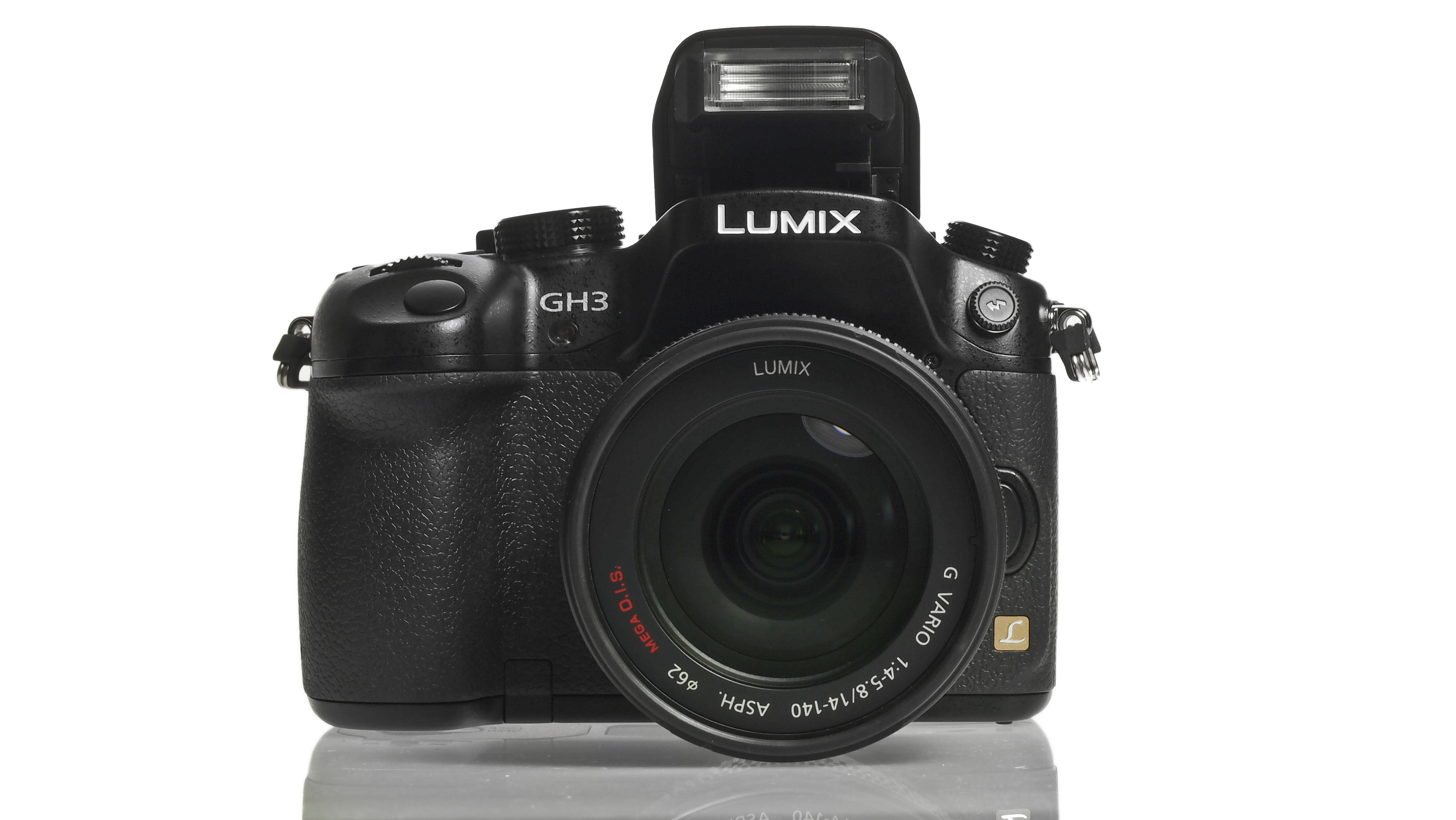Why you can trust TechRadar
We shoot a specially designed chart in carefully controlled conditions and the resulting images are analysed using DXO Analyzer software to generate the data to produce the graphs below.
A high signal to noise ratio (SNR) indicates a cleaner and better quality image.
For more more details on how to interpret our test data, check out our full explanation of our noise and dynamic range tests.
Here we compare the Panasonic GH3 with the Olympus OM-D, Sony NEX-7 and Fuji X-Pro1.
JPEG signal to noise ratio
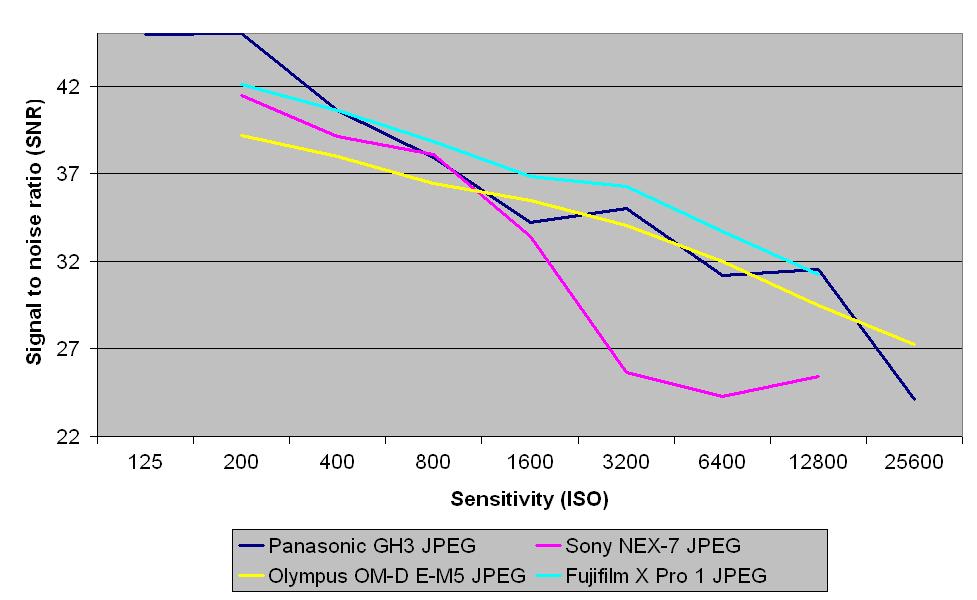
These results show that the Panasonic GH3's JPEG files produce a stronger signal to noise ratio than those from the Sony NEX-7 at every sensitivity, though at ISO 800 the scores are very similar. The Panasonic's JPEGs also beat the Olympus OM-D's at most sensitivities, with the Olympus's images only displaying better signal to noise ratios at ISO 1600, 6400 and 25600. The Fuji X-Pro1, on the other hand, produces images with stronger SNR than the Panasonic's at every ISO except ISO 200 - though at ISO 400 and 12800 the scores are similar.
A strong signal to noise ratio indicates that images have less noise.
Raw signal to noise ratio
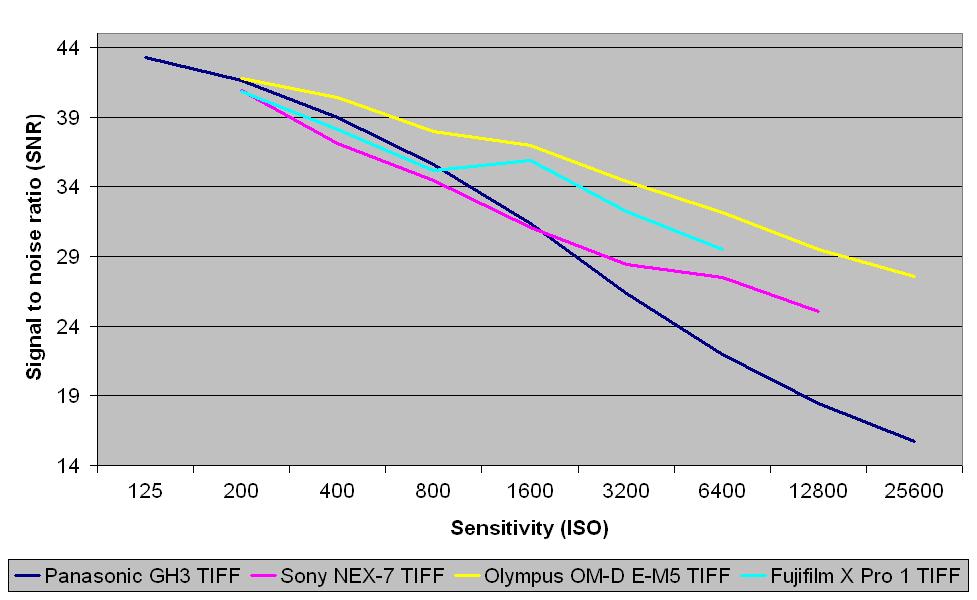
The signal to noise ratios of the TIFF images (after conversion from raw) from the Panasonic GH3 fluctuate much less than those of the JPEG images, with the GH3 sitting above the Fuji X-Pro1 up until ISO 800, and above the Sony NEX-7 until ISO 1600. After this point, the other cameras' TIFFs have better signal to noise ratios, indicating that they are less noisy. The Olympus OM-D's TIFFs outperform the Panasonic's at every sensitivity setting.
JPEG dynamic range
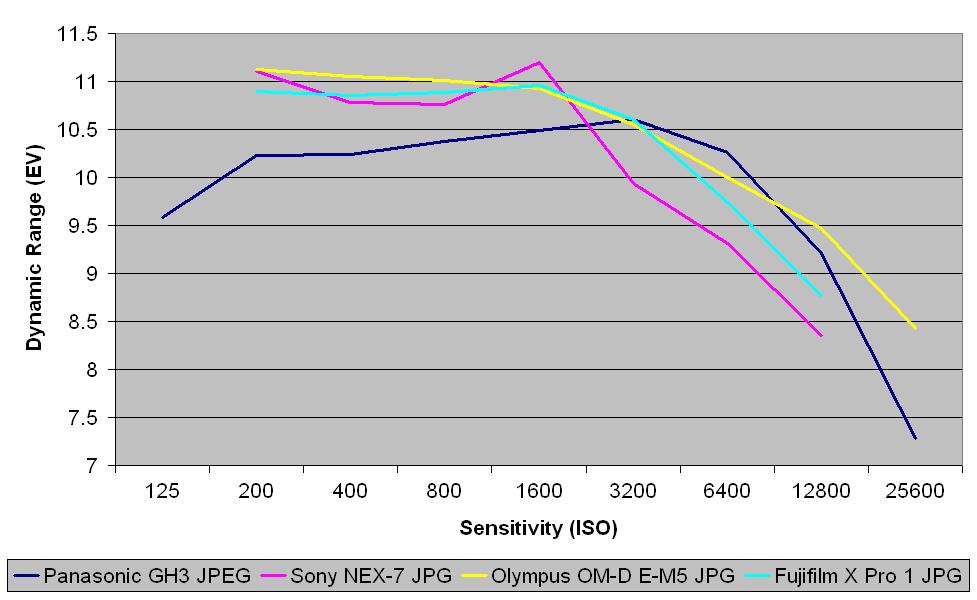
As we can see from this chart, the Panasonic GH3's JPEG images show weaker dynamic range than all the other cameras' at lower sensitivities, but at ISO 3200 they overtake the Sony NEX-7, and stay ahead for the rest of the range. Also at ISO 3200, the Panasonic's JPEGs show almost identical levels of dynamic range as the Olympus OM-D, and Fuji X-Pro1's images. The Panasonic's JPEGs go on to beat the Fuji's for the rest of the range, and beat the Olympus's at ISO 6400, before falling behind again at ISO 12800 and 25600.
Raw dynamic range
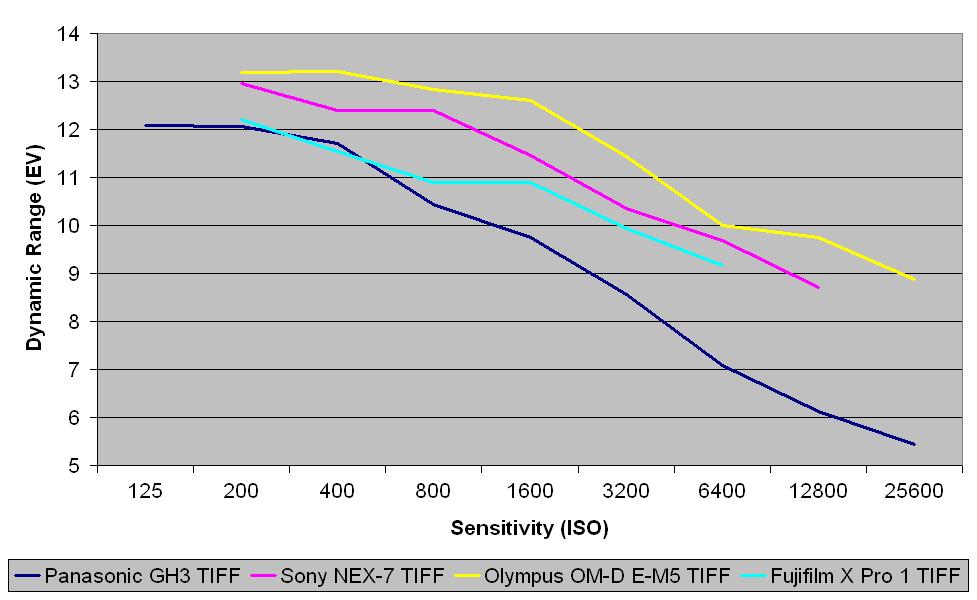
Here we can see that TIFF images (after conversion from raw) from the Panasonic GH3 produce weaker dynamic range than those from the Olympus OM-D and Sony NEX-7 at every sensitivity. The Panasonic's TIFFs also show weaker dynamic range than the Fuji X-Pro1, at every sensitivity but ISO 400. However, the low sensitivity results are good indicating that the GH3 can record a wide range of tones in one shot.
Current page: Noise and dynamic range
Prev Page Image quality and resolution Next Page Sample images